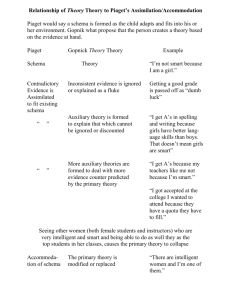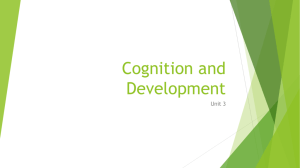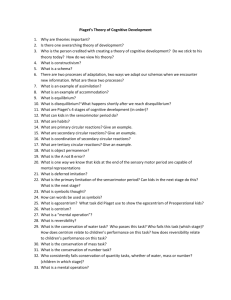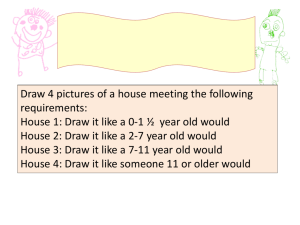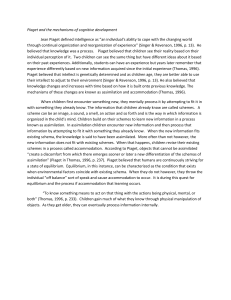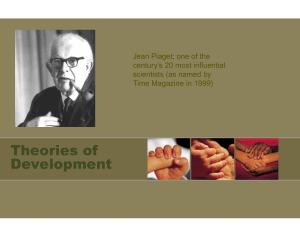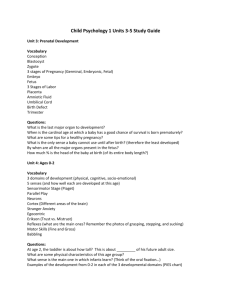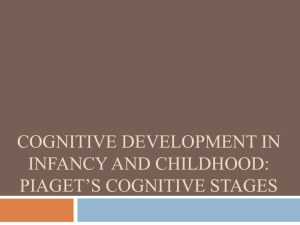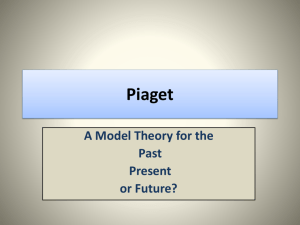Piaget/Genetic Epistemology HOW DO CHILDREN`S MINDS
advertisement
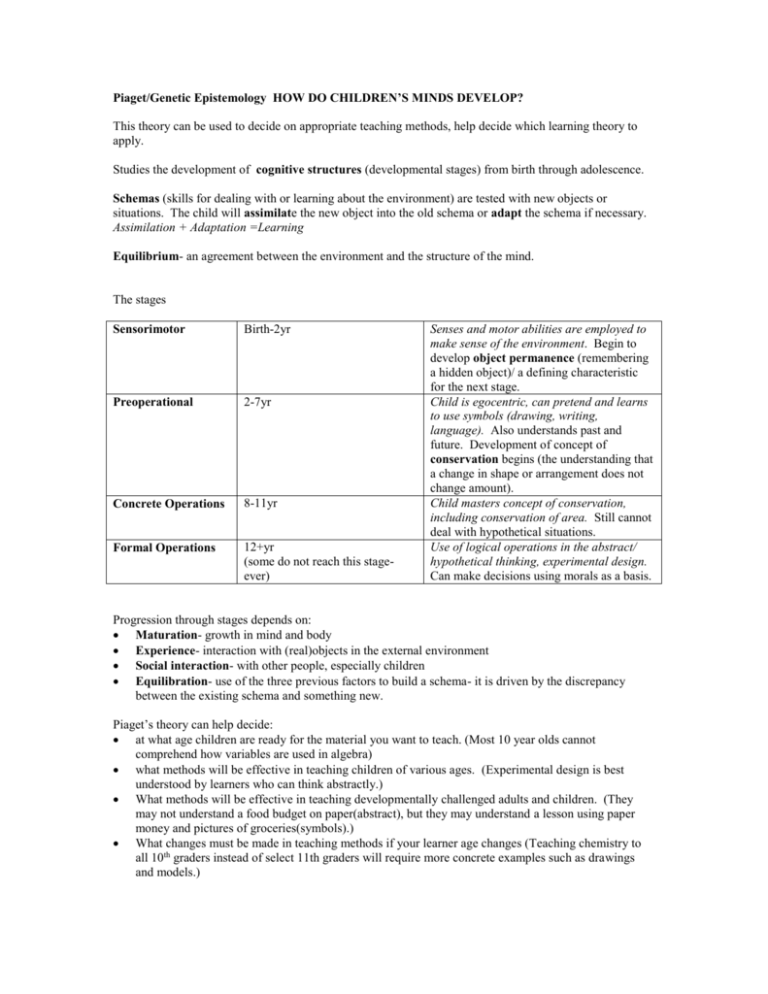
Piaget/Genetic Epistemology HOW DO CHILDREN’S MINDS DEVELOP? This theory can be used to decide on appropriate teaching methods, help decide which learning theory to apply. Studies the development of cognitive structures (developmental stages) from birth through adolescence. Schemas (skills for dealing with or learning about the environment) are tested with new objects or situations. The child will assimilate the new object into the old schema or adapt the schema if necessary. Assimilation + Adaptation =Learning Equilibrium- an agreement between the environment and the structure of the mind. The stages Sensorimotor Birth-2yr Preoperational 2-7yr Concrete Operations 8-11yr Formal Operations 12+yr (some do not reach this stageever) Senses and motor abilities are employed to make sense of the environment. Begin to develop object permanence (remembering a hidden object)/ a defining characteristic for the next stage. Child is egocentric, can pretend and learns to use symbols (drawing, writing, language). Also understands past and future. Development of concept of conservation begins (the understanding that a change in shape or arrangement does not change amount). Child masters concept of conservation, including conservation of area. Still cannot deal with hypothetical situations. Use of logical operations in the abstract/ hypothetical thinking, experimental design. Can make decisions using morals as a basis. Progression through stages depends on: Maturation- growth in mind and body Experience- interaction with (real)objects in the external environment Social interaction- with other people, especially children Equilibration- use of the three previous factors to build a schema- it is driven by the discrepancy between the existing schema and something new. Piaget’s theory can help decide: at what age children are ready for the material you want to teach. (Most 10 year olds cannot comprehend how variables are used in algebra) what methods will be effective in teaching children of various ages. (Experimental design is best understood by learners who can think abstractly.) What methods will be effective in teaching developmentally challenged adults and children. (They may not understand a food budget on paper(abstract), but they may understand a lesson using paper money and pictures of groceries(symbols).) What changes must be made in teaching methods if your learner age changes (Teaching chemistry to all 10th graders instead of select 11th graders will require more concrete examples such as drawings and models.) Similar to other constructivist theories: Adjusting a schema is problem solving Vygotsky (Social Development) also relates cognitive development to age. Bruner (Constructivist) and Piaget say that lessons must be engaging to the learner Piaget’s learners must master one stage before they can proceed to the next, and Bruner’s learners extrapolate from knowledge already mastered, applying that knowledge to new situations. There are other theories which divide cognition into several components, though not in age related stages: Sternberg (Triarchic)- experiential, contextual, and componential subtheories. Gardner (Multiple Intelligences)- In Reigeluth, six “entry points” for teaching: narrational, quantitative, foundational, aesthetic, hands-on, and social. Guilford uses a three dimensional spreadsheet to combine three types of factors; content, operations, and products, into 150 type of learning. Just as Piaget developed age related stages for cognitive development, Kohlberg developed stages for moral development, Freud for psychosexual development, and Erikson for psychosocial development.
